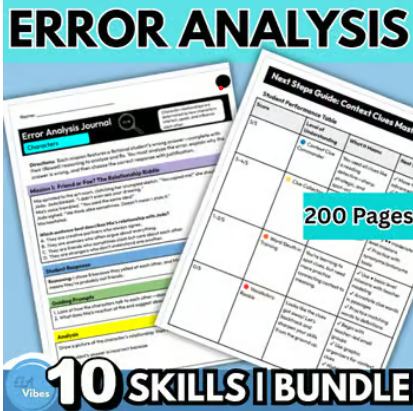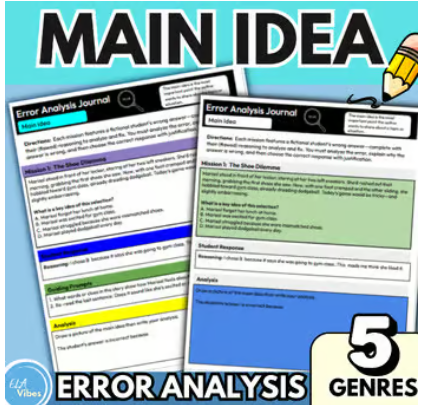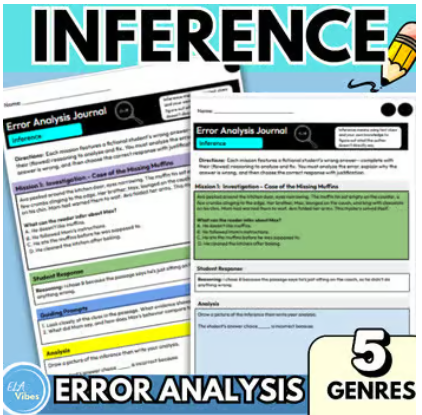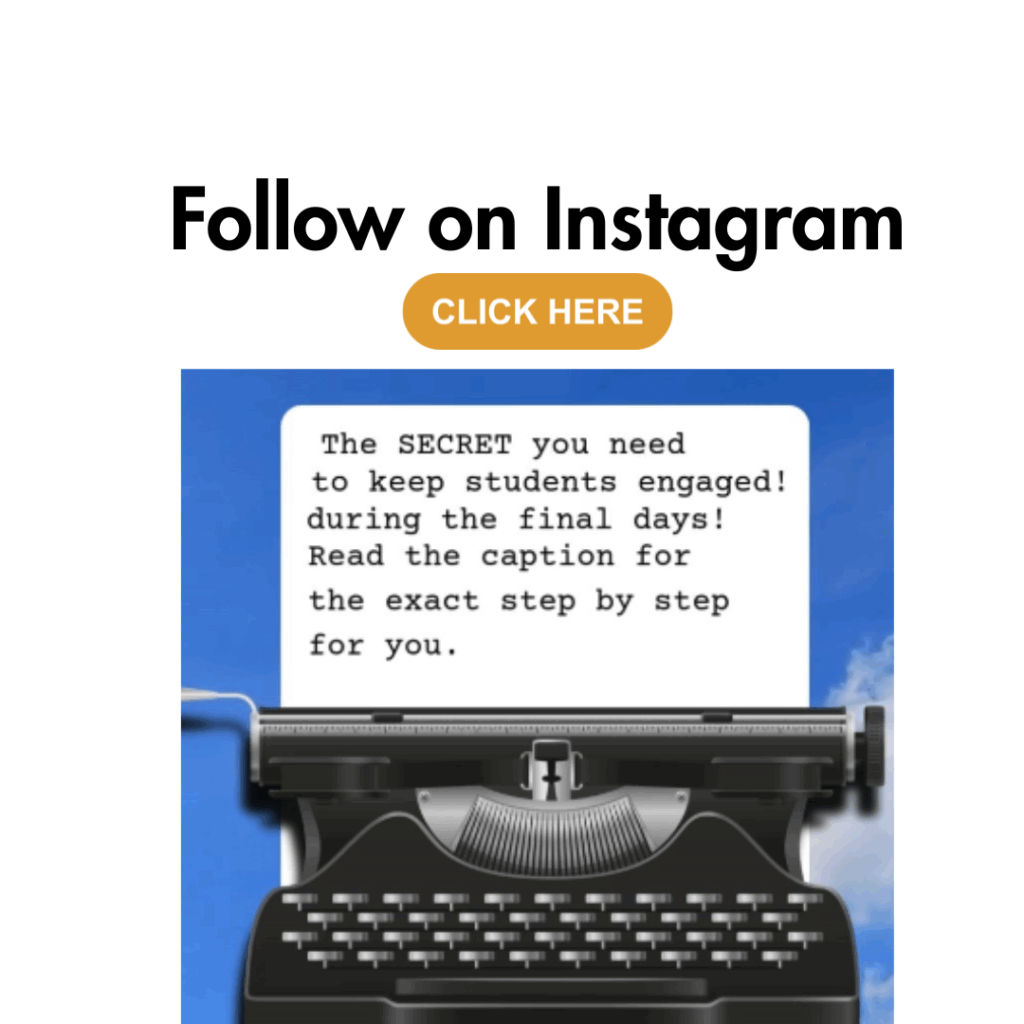Last updated on June 1st, 2025 at 11:44 pm
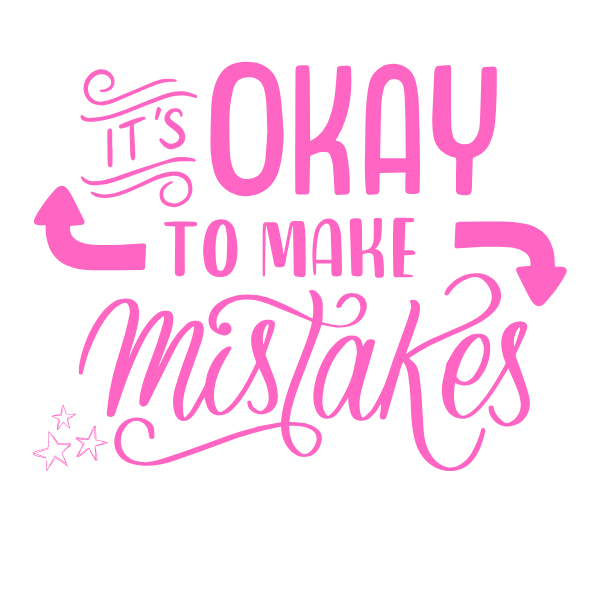
Nothing tests you more than grading an assignment where a student writes confidently, “The main idea is about blocks.” What about blocks? We literally just spent one week on evaluating key details to determine the main idea and they copied the titled.
Frustrating as it is, you’re sitting on a goldmine.
Error analysis is like trying on jeans. The moment you try on a pair you notice something is off. You don’t toss your whole wardrobe. You look in the mirror, adjust, and figure out what didn’t work. Was it the cut? The rise? The stretch? You analyze the fit so you can find the pair that actually works for your body.
This post will show you how error analysis can transform your reading instruction. Reading error analysis gives you clarity: where the comprehension breakdown happened, why it happened, and how to fix it. The solution? Simple strategies and tools you can implement tomorrow to turn mistakes into momentum.
What You’ll Learn About Reading Error Analysis
- What error analysis is in the context of reading
- What is the purpose of reading error analysis
- How to identify three common types of reading errors
- Real-life classroom examples and no-prep support tools
WHAT IS ERROR ANALYSIS IN READING?
Reading error analysis is examining incorrect responses to identify patterns in your thinking. It’s about digger deeper to make sense of a mistake by asking yourself these questions:
- Why do I think this?
- What misconception led to this choice?
- What steps can I take to move from confusion to understanding?
Grab this free poster by clicking here or the image. ⬇️

Why Reading Mistakes Deserve a Second Look
Why did the mistake happen in the first place? Understanding the why is powerful. The purpose of reading error analysis is to:
- Pinpoint the breakdown in comprehension
- Inform targeted reteach strategies
- Differentiate reading supports
- Guide small group planning
It’s not just about scoring, it’s about learning from the why.
What Are Three Types of Reading comprehension Errors?
This section I am writing from experience as a teacher and administrator. Mistakes are usually rooted from these top three reading suspects:
- Vocabulary Mistakes-In my 20 years as an educator, I have witnessed beautiful word callers. These are students who read fluently but struggle with comprehension. More often than not, their mistakes happen because they don’t understand the meaning of key words.
- Inference Struggles- Many of our students are disadvantaged in life experiences and do not have anything to connect to when reading.
- Main Idea Misfires- Students latch onto one detail and miss the whole message.
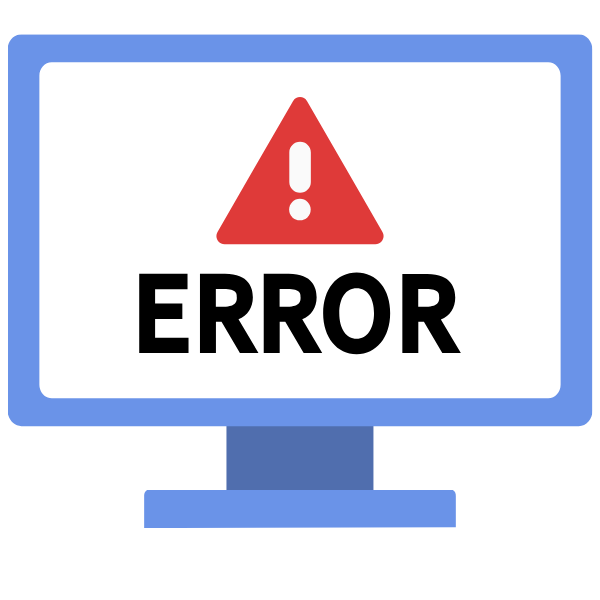
How to Implement Error Analysis in Your Classroom
1. Model the mindset: Walk through questions and narrate your thinking as you identify errors.
Use sentence stems:
“I thought this because…”
“A better strategy would have been…”
“My mistake was…”
2. Make it visual: Highlight errors in color, add margin notes, or use graphic organizers for error sorting.
3. Integrate into daily routines: Error analysis should become a natural part of your feedback cycle.
Quick idea: After an assignment, give students 2–3 anonymous student answers to a question.
Ask:
- How can we fix it?
- What’s the mistake?
- Why might someone think this was correct?

Error Analysis Examples for 3rd-5th Grade Reading
1. 🔍 Error Sort Cards
Give students 3–4 sample answers to a reading question (some correct, some with errors). Have them sort into categories:
- ✅ Correct
- 🤔 Close but not quite
- ❌ Off-topic or misunderstanding
Then, have students explain why each belongs where it does.
2. 🧠 Think-Aloud Reflections
Model your thought process as you “mess up” on purpose:
“I picked this answer, but now I realize I didn’t check the second paragraph. That’s where the real clue was.”
Then, let students do the same using sentence stems like:
- I thought this because…
- Next time I will…
- I made this mistake because…
3. 🎨 Color-Code the Clues
After answering, students go back and highlight the evidence they used. If they can’t find text support or it doesn’t match their answer that’s the error!
Tip: Use red for wrong clues, green for helpful clues.
4. 🧩 Fix it Friday Game
Give students a short paragraph with a flawed answer. Their job? Revise it to be stronger.
This works especially well with main idea, theme, or summary questions.
Example: The main idea is that the cat likes naps.
➡ Revision: The main idea is how a cat overcomes his fear during a storm.
5. 📊 Error Tracking Charts
Have students log the types of reading errors they make over time (e.g., inference, vocabulary, main idea).
Then reflect weekly:
- Why did I make this mistake?
- What strategy can help me fix that?
This builds metacognition (thinking about your thinking) and helps you group students for targeted review.
Conclusion: Turn Mistakes Into Momentum
Reading mistakes aren’t red flag. They are road signs. Error analysis helps teachers see where students almost got it, and shows students that learning is a process, not a pop quiz.
Want an easy way to get started? Check out the Reading Error Analysis STAAR Test Prep Resource for 3rd–5th grade. It includes:
✔ Pre-made error-based questions
✔ Guiding prompts
✔ Analysis section
✔ Standards-aligned practice
Error analysis: the shortcut you’ve been looking for. Click on the image for more details! ⬇️⬇️⬇️
Additional Resources to add to your toolbox
Teaching Students Error Analysis
How to Teach Summarizing to 3rd-5th Graders
Favorite items to support error analysis
*As an affiliate, I may earn a small commission if you purchase through this link at no extra cost to you. I only recommend resources I truly trust for the classroom!
